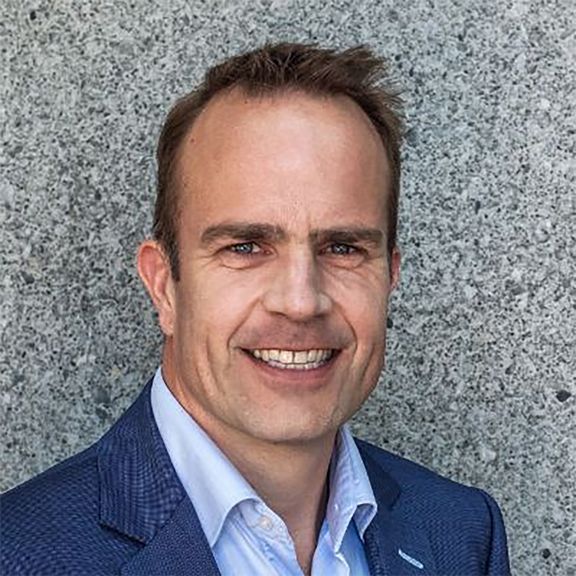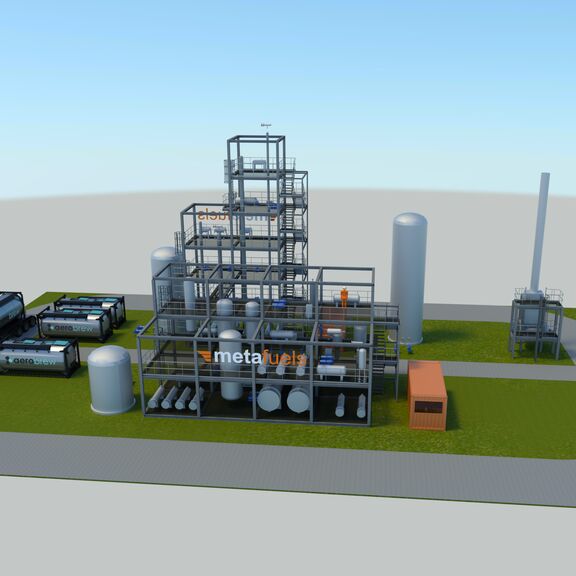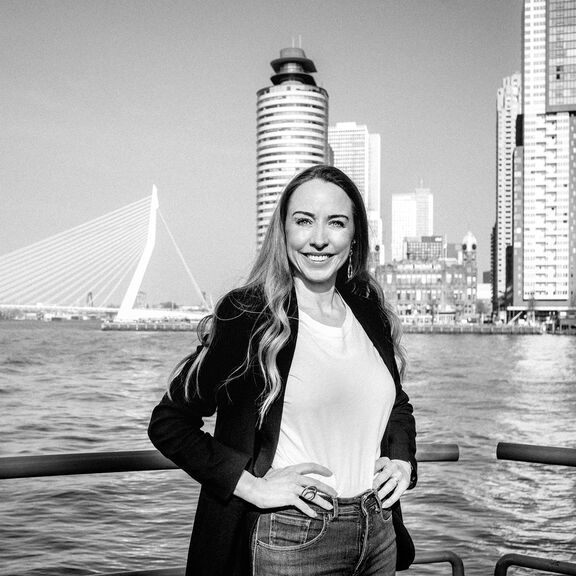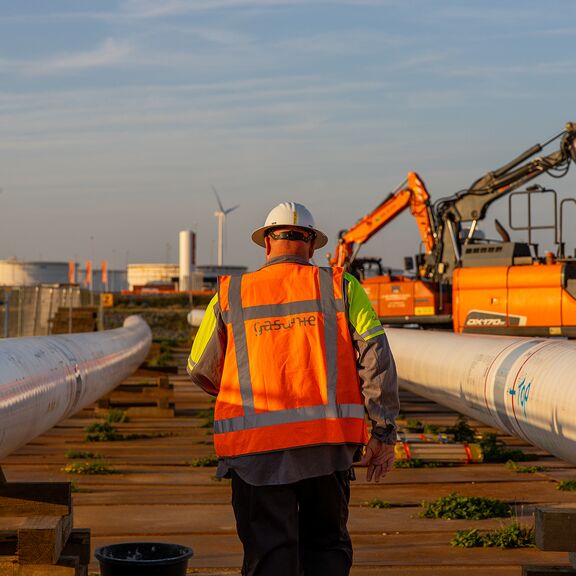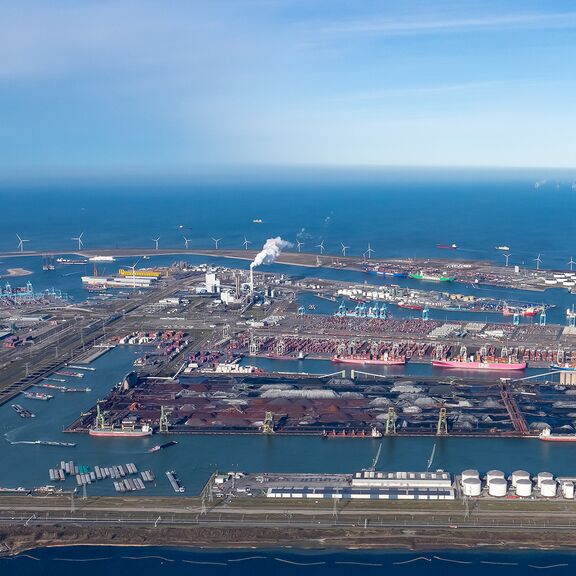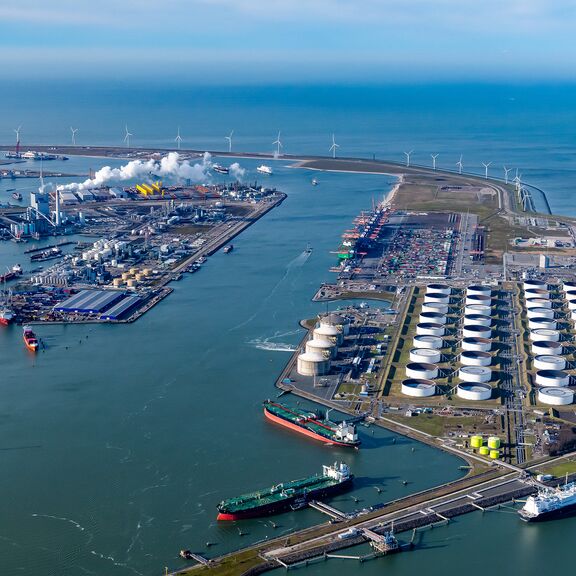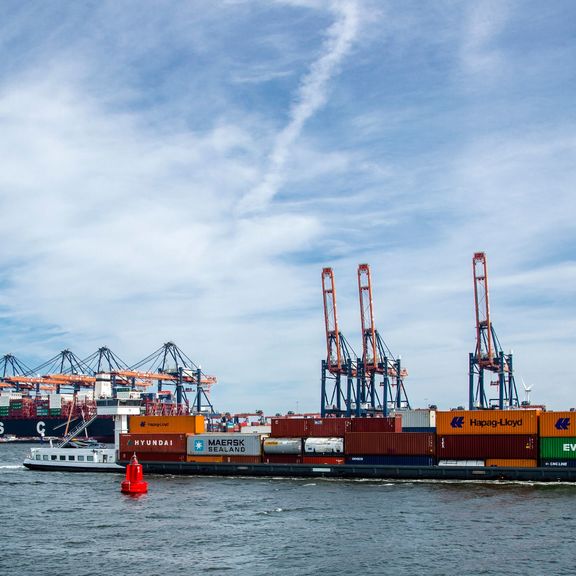
Optimising inland container shipping chain
Container handling is the key driver of growth in the port today. And inland shipping plays an indispensable role in the transport of containers to the hinterland. In 2024, container throughput in the port of Rotterdam was 13.8 million TEU.
At present, 34% of the containers that move between Maasvlakte and the hinterland are transported by inland vessels. To facilitate this growth, we aim to fully optimise the inland container shipping chain.
Developments in the container chain
Scaling up in marine shipping
The scale of marine shipping is increasing: both the sea-going vessels themselves and call sizes (the number of containers that need to be loaded/unloaded per port call) are getting bigger, and peaks in the call sizes are sharper. The capacities of the largest sea-going vessels that call on Rotterdam now exceed 23,000 TEU.
Alliances
The rise in consolidation and collaboration between the major container shipping lines is leading to the bundling of volumes on large vessels. These shipping alliances are including Rotterdam on their itineraries, taking advantage of the port’s range of deep-sea terminals.
Growing volumes
Container volumes in the port of Rotterdam have risen sharply since 2010. Inland container shipping to and from Rotterdam has also increased to more than 3 million TEU. Pressure on the port’s quays is expected to rise further as deep sea, feeder and barge volumes get larger.
New terminal capacity
The deep-sea terminals of Rotterdam World Gateway and APM Terminals Maasvlakte II started operations on Maasvlakte 2 in 2015. These facilities can accommodate the larger container volumes that are expected to move in and out of the port. With no fewer than five deep-sea terminals on the Maasvlakte, the planning of inland container shipping in Rotterdam has become more complex than ever.
Free time, demurrage & detention
Agreements regarding free time, demurrage & detention have a strong impact on the container process. The conditions relating to the retrieval or return of containers are becoming stricter, reducing the time available for inland container shipping.
Initiatives in the inland container shipping sector
The Port of Rotterdam Authority is facilitating structural sector-wide negotiations between all players in the container chain: shippers, shipping companies, freight forwarders, barge operators, inland terminals, deep-sea terminals and empty depots.* To accommodate developments in the container chain and respond effectively to the consequences, all parties in the chain are working together on a more transparent and efficient structure for the inland container shipping chain. A variety of initiatives have been taken in this context.
*APMT, BDB, BDI/DSVK, CBRB, Deltalinqs, EBU, ECT, evofenedex, FENEX/TLN, Royal BLN-Schuttevaer, LINc, Ministry of Infrastructure and Water Management, Portbase, Port of Rotterdam Authority, RWG, SPEDLOGSWISS, SSC, SVS, VRC, VRTO
GUIDELINE
The parties in the chain have drawn up a guideline for shippers and freight forwarders. It contains recommendations about how they can have an influence on the development of a more transparent and efficient structure for the inland container shipping chain.
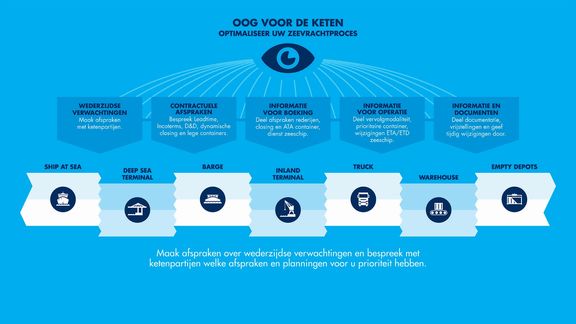
Nextlogic
Nextlogic provides integrated planning for the handling of inland container shipping flows in the port of Rotterdam. It results in the optimal utilisation of assets at the deep-sea terminals, empty depots and barge operators, and makes inland shipping efficient and reliable for shippers and freight forwarders.
Portbase
Portbase uses the Port Community System to provide a platform for all parties to exchange information relating to the logistics chain involving Rotterdam – simply and efficiently. Participants can use Portbase’s services and share information with each other to obtain real-time information about a container’s current status.
Bundling
Collaboration between sector players has resulted in the bundling of container volumes in the hinterland and in the port. New agreements with deep-sea terminals about call times and call sizes can further improve the reliability of container shipping services. Terminals are offering fixed windows – guaranteed handling times – subject to certain conditions in order to support bundling initiatives.
In the hinterland
The Port of Rotterdam Authority is backing initiatives that allow barge operators to work together and bundle container shipments in the port’s hinterland. The barge operators work in hubs to bundle containers and have assigned slots (aka fixed windows) for scheduled services at one or more deep-sea terminals. Examples include the North West Central Corridor, the West Brabant Corridor, the Ruhr Express and the Limburg Express.
In the port
Containers are bundled at Maasvlakte, Waal-Eemhaven and Alblasserdam and transported directly by inland vessel to and from the deep-sea terminals according to a fixed schedule.
Overflow hubs
Parties in the port are exploring the possible use of overflow hubs to utilise capacity more efficiently, absorb peaks more effectively, spread volumes and respond to changes in the chain. These overflow hubs can be both virtual and physical. In addition, studies are being conducted into the possible use of push-barges.
Infrastructure
The port of Rotterdam pays continuous attention to its extensive network ofintermodal transport connections (rail, inland shipping, road and pipelines) with the hinterland. The capacity of this network is being structurally expanded through programmes like the widening of the A15 motorway, the Breeddiep waterway, the Botlek bridge, the Theemsweg route and the Port Railway Line.
The Port of Rotterdam Authority is actively involved in the Cargo Transport Corridors Programme, in which the Ministry of Infrastructure and Water Management, the Logistics Top Sector and the Provinces of Gelderland, Limburg, Noord-Brabant and Zuid-Holland are working together to improve the ‘Top Corridors’ transport infrastructure.
Measuring performance in the chain
The development of a KPI Dashboard enables the uniform definition and monitoring of results throughout the chain for all interested parties. We have developed a dedicated Barge Performance Monitor for inland vessels sailing to and from the port of Rotterdam.
More information? Contact:
